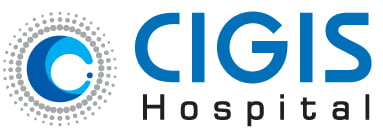
Gall bladder is pear- shaped bag lying on the under surface of the liver.It is situated on the right side of upper abdomen under the right rib cage.It joins the main duct of the liver taking bile produced in the liver to the small intestine.Main function of the gall bladder is to store bile and release the bile into the small intestine when we eat fatty meal. stored, into the bile duct, and from there into the gut.
If the gall bladder is not functioning properly it can develop stones. The gallbladder can develop just one or two large stones as large as , or lots of tiny stones.
Causes of Gallstones:
If the gall stone is detected incidentally and is not causing any symptoms then patient just need to followup with his doctor.
The common symptom are right and upper abdominal pain especially after heavy meal. The pain may radiate to back and right shoulder tip. This pain mostly last for few hours and is relieved on taking medication. If the pain persist longer than 24 hrs the chances are the you are having infection in the gall bladder which may require admission in the hospital and antiobiotic along with pain relief.
Gall stone if they slip into the bile duct may cause jaundice and sometime pancreatitis.
You can clinch the diagnosis of gall stone by history, clinical examination and doing simple ultrasound abdomen.Blood tests are usually done to check if the liver is functioning properly, and particularly look for evidence of biliary blockage or infection.If there is any suspicion that stone has slipped into bileduct then MRCP needs to be done.
Symptomatic gallstone require operation to remove gallbladder. Now-adays gallbladder removal(cholecystectomy) is done through laparoscopically. In laparoscopy 4 hole are made in the tummy to do the operation , sometime if the gallbladder cannot be removed safely through laparoscopy the open ( making a cut under the right side rib cage) method is used though essentially the operation is same.
Chances of conversion of laparoscopic cholecystectomy to open method is only 2-3%. Surprisingly, removal of the gallbladder seems to have no effect on the digestive process in the vast majority of patients who undergo this operation.
Laparoscopic cholecystectomy is preferable to open surgery because the cuts made are much smaller, postoperative pain is less, hospital stay is shorter, and the return to normal activity much quicker.
Every operation has risks, but the surgeon and anaesthetist will take great care to prevent complications. Complications that may occur include bleeding, infection, injury to the liver or to an adjacent loop of bowel and, very rarely, pancreatitis.
The bile duct runs close to the gallbladder and there is a small risk of injury to the bile duct. Injury to the bile duct is a very rare but serious complication (2 to 3 in a thousand or less than 0.3%). This may lead to a bile leak, or to jaundice due to a narrowing or blockage of the bile duct. It may need a major operation to repair it.
Occasionally, a stone may slip into the bile duct during the operation, and later cause pain or jaundice or abnormal blood tests. If that happens, it can usually be removed later by doing an ERCP.
The vast majority of patients who have a laparoscopic cholecystectomy experience few or no complications and quickly return to normal activity.
Following keyhole surgery, most patients are well enough to go home in 12-24 hours and very few stay longer than 36 hours. If there is open surgery, the bigger cut will mean a longer recovery period (usually three to seven days).
On getting home, the patient will get better quickly and should only need pain killers for another 2-3 days.
It is reasonable to shower and remove the wound dressings around 48 hours after the operation . If the cuts are stitched with dissolving sutures, stitch removal is not necessary –this will need to be checked with the surgeon.
One should be able to return to normal activities within a few days and get back to work within 1-2 weeks. Some people recover more quickly than others, so each person should take things at his/her own pace. If doing something hurts, then one should stop doing it. It is important to avoid heavy lifting, and not drive until one feels comfortable about making an emergency stop. After an open cholecystectomy, a longer recovery period, around four to six weeks, may be needed.
The patient will usually have a routine outpatient appointment to see the surgeon. However, if one notices fever, yellow discoloration of the skin and eyes, abdominal pain, nausea, vomiting, abdominal swelling, or discharge from the wound, a doctor should be contacted immediately. These may be the symptoms of a complication and should not be ignored.
To book your appointment with a gastro surgeon, please reach out to us on +91 8160650099

